Strongly Confining Light with Air-Mode Cavities in Inverse Rod-Connected Diamond Photonic Crystals
Abstract
:1. Introduction
2. Numerical Modeling and Calculation Method
3. Results
4. Discussion and Conclusions
Author Contributions
Funding
Institutional Review Board Statement
Informed Consent Statement
Data Availability Statement
Acknowledgments
Conflicts of Interest
References
- Yablonovitch, E. Inhibited Spontaneous Emission in Solid-State Physics and Electronics. Phys. Rev. Lett. 1987, 58, 2059–2062. [Google Scholar] [CrossRef] [PubMed] [Green Version]
- John, S. Strong Localization of Photons in Certain Disordered Dielectric Superlattices. Phys. Rev. Lett. 1987, 58, 2486–2489. [Google Scholar] [CrossRef] [Green Version]
- Joannopoulos, J.D.; Johnson, S.G.; Winn, J.N.; Meade, R.D. Photonic Crystals: Molding the Flow of Light, 2nd ed.; Princeton University Press: Princeton, NJ, USA, 2008. [Google Scholar]
- Purcell, E.M. Spontaneous Emission Probabilities at Radio Frequencies. Phys. Rev. 1946, 69, 246–260. [Google Scholar] [CrossRef]
- Khitrova, G.; Gibbs, H.M.; Kira, M.; Koch, S.W.; Scherer, A. Vacuum Rabi Splitting in Semiconductors. Nat. Phys. 2006, 2, 81–90. [Google Scholar] [CrossRef]
- Vos, W.L.; Woldering, L.A. Cavity Quantum Electrodynamics with Three-Dimensional Photonic Bandgap Crystals. In Light Localisation and Lasing: Random and Quasi-Random Photonic Structures; Ghulinyan, M., Pavesi, L., Eds.; Cambridge University Press: Cambridge, UK, 2015; pp. 180–213. [Google Scholar]
- Reiserer, A.; Rempe, G. Cavity-Based Quantum Networks with Single Atoms and Optical Photons. Rev. Mod. Phys. 2015, 87, 1379–1418. [Google Scholar] [CrossRef]
- Pandey, S.; Baburaj, N.; Joseph, S.; Joseph, J. Resonant Optical Modes in Periodic Nanostructures. ISSS J. Micro Smart Syst. 2022. [Google Scholar] [CrossRef]
- Gowdhami, D.; Balaji, V.R.; Murugan, M.; Robinson, S.; Hegde, G. Photonic Crystal Based Biosensors: An Overview. ISSS J. Micro Smart Syst. 2022. [Google Scholar] [CrossRef]
- Hu, S.; Khater, M.; Salas-Montiel, R.; Kratschmer, E.; Engelmann, S.; Green, W.M.J.; Weiss, S.M. Experimental Realization of Deep-Subwavelength Confinement in Dielectric Optical Resonators. Sci. Adv. 2018, 4, eaat2355. [Google Scholar] [CrossRef] [Green Version]
- von Freymann, G.; Ledermann, A.; Thiel, M.; Staude, I.; Essig, S.; Busch, K.; Wegener, M. Three-Dimensional Nanostructures for Photonics. Adv. Funct. Mater. 2010, 20, 1038–1052. [Google Scholar] [CrossRef]
- Chen, L.; Morgan, K.A.; Alzaidy, G.A.; Huang, C.-C.; Ho, Y.-L.D.; Taverne, M.P.C.; Zheng, X.; Ren, Z.; Feng, Z.; Zeimpekis, I.; et al. Observation of Complete Photonic Bandgap in Low Refractive Index Contrast Inverse Rod-Connected Diamond Structured Chalcogenides. ACS Photonics 2019, 6, 1248–1254. [Google Scholar] [CrossRef] [Green Version]
- Fushman, I.; Englund, D.; Vučković, J. Coupling of PbS Quantum Dots to Photonic Crystal Cavities at Room Temperature. Appl. Phys. Lett. 2005, 87, 241102. [Google Scholar] [CrossRef] [Green Version]
- Miura, R.; Imamura, S.; Ohta, R.; Ishii, A.; Liu, X.; Shimada, T.; Iwamoto, S.; Arakawa, Y.; Kato, Y.K. Ultralow Mode-Volume Photonic Crystal Nanobeam Cavities for High-Efficiency Coupling to Individual Carbon Nanotube Emitters. Nat. Commun. 2014, 5, 5580. [Google Scholar] [CrossRef] [PubMed] [Green Version]
- Aharonovich, I.; Englund, D.; Toth, M. Solid-State Single-Photon Emitters. Nat. Photonics 2016, 10, 631–641. [Google Scholar] [CrossRef]
- Alam, M.W.; Souayeh, B.; Islam, S.F. Enhancement of Thermoelectric Performance of a Nanoribbon Made of α-T3 Lattice. J. Phys. Condens. Matter 2019, 31, 485303. [Google Scholar] [CrossRef] [Green Version]
- Taverne, M.P.C.; Ho, Y.-L.D.; Zheng, X.; Chen, L.; Fang, C.-H.N.; Rarity, J. Strong Light Confinement in Rod-Connected Diamond Photonic Crystals. Opt. Lett. 2018, 43, 5202–5205. [Google Scholar] [CrossRef] [PubMed]
- Zheng, X.; Taverne, M.; Ho, Y.-L.; Rarity, J. Cavity Design in Woodpile Based 3D Photonic Crystals. Appl. Sci. 2018, 8, 1087. [Google Scholar] [CrossRef] [Green Version]
- Taverne, M.P.C.; Ho, Y.-L.D.; Zheng, X.; Liu, S.; Chen, L.-F.; Lopez-Garcia, M.; Rarity, J.G. Modelling Defect Cavities Formed in Inverse Three-Dimensional Rod-Connected Diamond Photonic Crystals. EPL (Europhys. Lett.) 2016, 116, 64007. [Google Scholar] [CrossRef] [Green Version]
- Taverne, M.P.C.; Ho, Y.-L.D.; Rarity, J.G. Investigation of Defect Cavities Formed in Three-Dimensional Woodpile Photonic Crystals. J. Opt. Soc. Am. B 2015, 32, 639. [Google Scholar] [CrossRef] [Green Version]
- Ho, Y.D.; Ivanov, P.S.; Engin, E.; Nicol, M.F.J.; Taverne, M.P.C.; Chengyong, H.; Cryan, M.J.; Craddock, I.J.; Railton, C.J.; Rarity, J.G. FDTD Simulation of Inverse 3-D Face-Centered Cubic Photonic Crystal Cavities. IEEE J. Quantum Electron. 2011, 47, 1480–1492. [Google Scholar] [CrossRef]
- Wang, C.; Quan, Q.; Kita, S.; Li, Y.; Lončar, M. Single-Nanoparticle Detection with Slot-Mode Photonic Crystal Cavities. Appl. Phys. Lett. 2015, 106, 261105. [Google Scholar] [CrossRef] [Green Version]
- Liang, F.; Quan, Q. Detecting Single Gold Nanoparticles (1.8 Nm) with Ultrahigh- Q Air-Mode Photonic Crystal Nanobeam Cavities. ACS Photonics 2015, 2, 1692–1697. [Google Scholar] [CrossRef]
- Ryckman, J.D.; Weiss, S.M. Low Mode Volume Slotted Photonic Crystal Single Nanobeam Cavity. Appl. Phys. Lett. 2012, 101, 071104. [Google Scholar] [CrossRef] [Green Version]
- Chan, C.T.; Datta, S.; Ho, K.M.; Soukoulis, C.M. A 7 Structure: A Family of Photonic Crystals. Phys. Rev. B 1994, 50, 1988–1991. [Google Scholar] [CrossRef] [PubMed] [Green Version]
- Maldovan, M.; Thomas, E.L. Diamond-Structured Photonic Crystals. Nat. Mater. 2004, 3, 593–600. [Google Scholar] [CrossRef] [PubMed]
- Sellers, S.R.; Man, W.; Sahba, S.; Florescu, M. Local Self-Uniformity in Photonic Networks. Nat. Commun. 2017, 8, 14439. [Google Scholar] [CrossRef] [PubMed] [Green Version]
- Edagawa, K. Photonic Crystals, Amorphous Materials, and Quasicrystals. Sci. Technol. Adv. Mater. 2014, 15, 34805. [Google Scholar] [CrossRef] [PubMed] [Green Version]
- Men, H.; Lee, K.Y.K.; Freund, R.M.; Peraire, J.; Johnson, S.G. Robust Topology Optimization of Three-Dimensional Photonic-Crystal Band-Gap Structures. Opt. Express 2014, 22, 22632. [Google Scholar] [CrossRef] [Green Version]
- Johnson, S.; Joannopoulos, J. Block-Iterative Frequency-Domain Methods for Maxwell’s Equations in a Planewave Basis. Opt. Express 2001, 8, 173. [Google Scholar] [CrossRef] [Green Version]
- Railton, C.J.; Hilton, G.S. The Analysis of Medium-Sized Arrays of Complex Elements Using a Combination of FDTD and Reaction Matching. IEEE Trans. Antennas Propag. 1999, 47, 707–714. [Google Scholar] [CrossRef] [Green Version]
- Coccioli, R.; Boroditsky, M.; Kim, K.W.; Rahmat-Samii, Y.; Yablonovitch, E. Smallest Possible Electromagnetic Mode Volume in a Dielectric Cavity. IEE Proc. Optoelectron. 1998, 145, 391–397. [Google Scholar] [CrossRef]
- Boroditsky, M.; Vrijen, R.; Krauss, T.F.; Coccioli, R.; Bhat, R.; Yablonovitch, E. Spontaneous Emission Extraction and Purcell Enhancement from Thin-Film 2-D Photonic Crystals. J. Light. Technol. 1999, 17, 2096–2112. [Google Scholar] [CrossRef] [Green Version]
- Yu, P.; Qi, B.; Jiang, X.; Wang, M.; Yang, J. Ultrasmall-V High-Q Photonic Crystal Nanobeam Microcavities Based on Slot and Hollow-Core Waveguides. Opt. Lett. 2011, 36, 1314. [Google Scholar] [CrossRef] [PubMed]
- Yoshie, T.; Tang, L.; Su, S.-Y. Optical Microcavity: Sensing down to Single Molecules and Atoms. Sensors 2011, 11, 1972–1991. [Google Scholar] [CrossRef] [PubMed]
- John, S. Why Trap Light? Nat. Mater. 2012, 11, 997–999. [Google Scholar] [CrossRef] [PubMed]
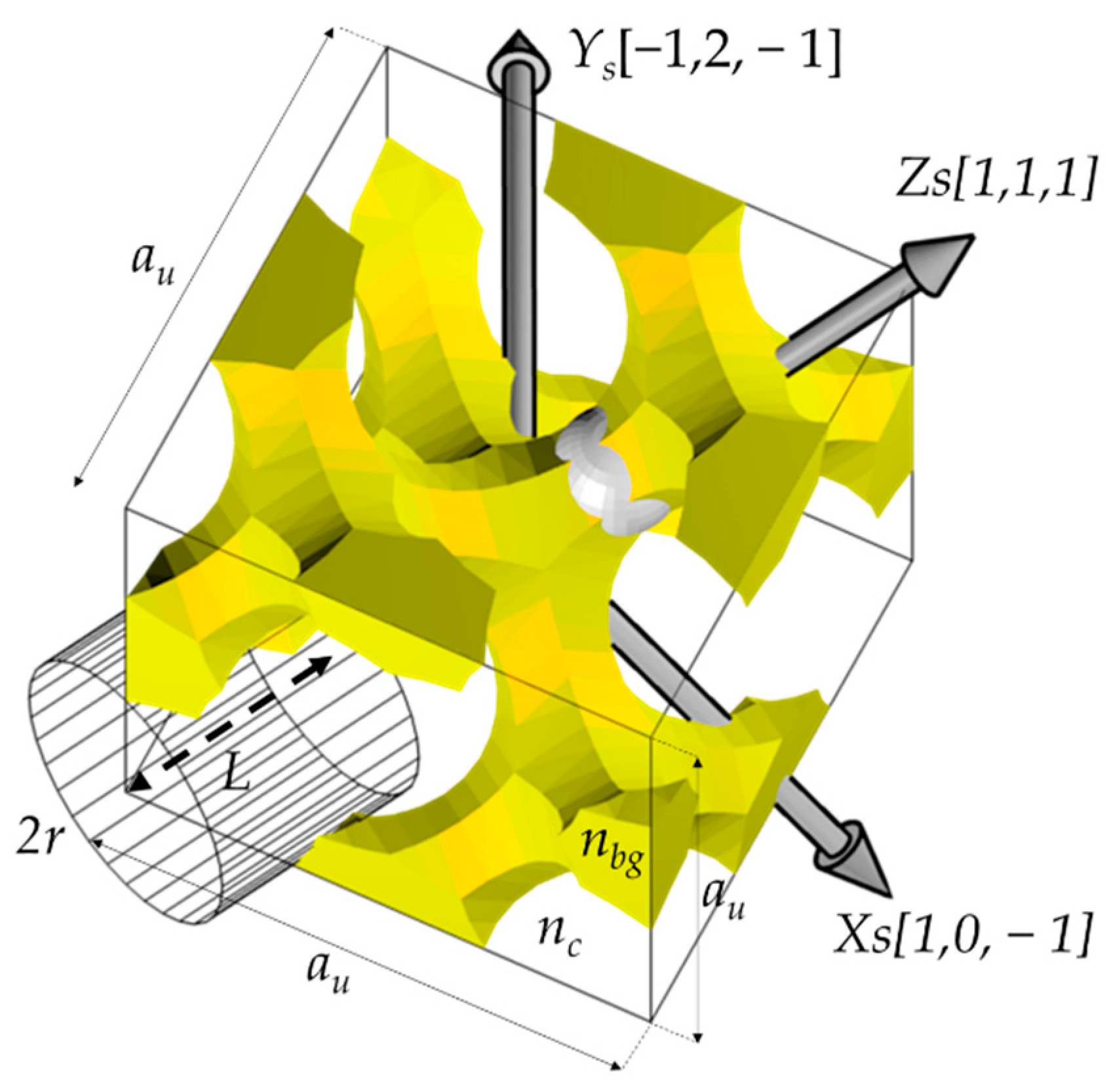
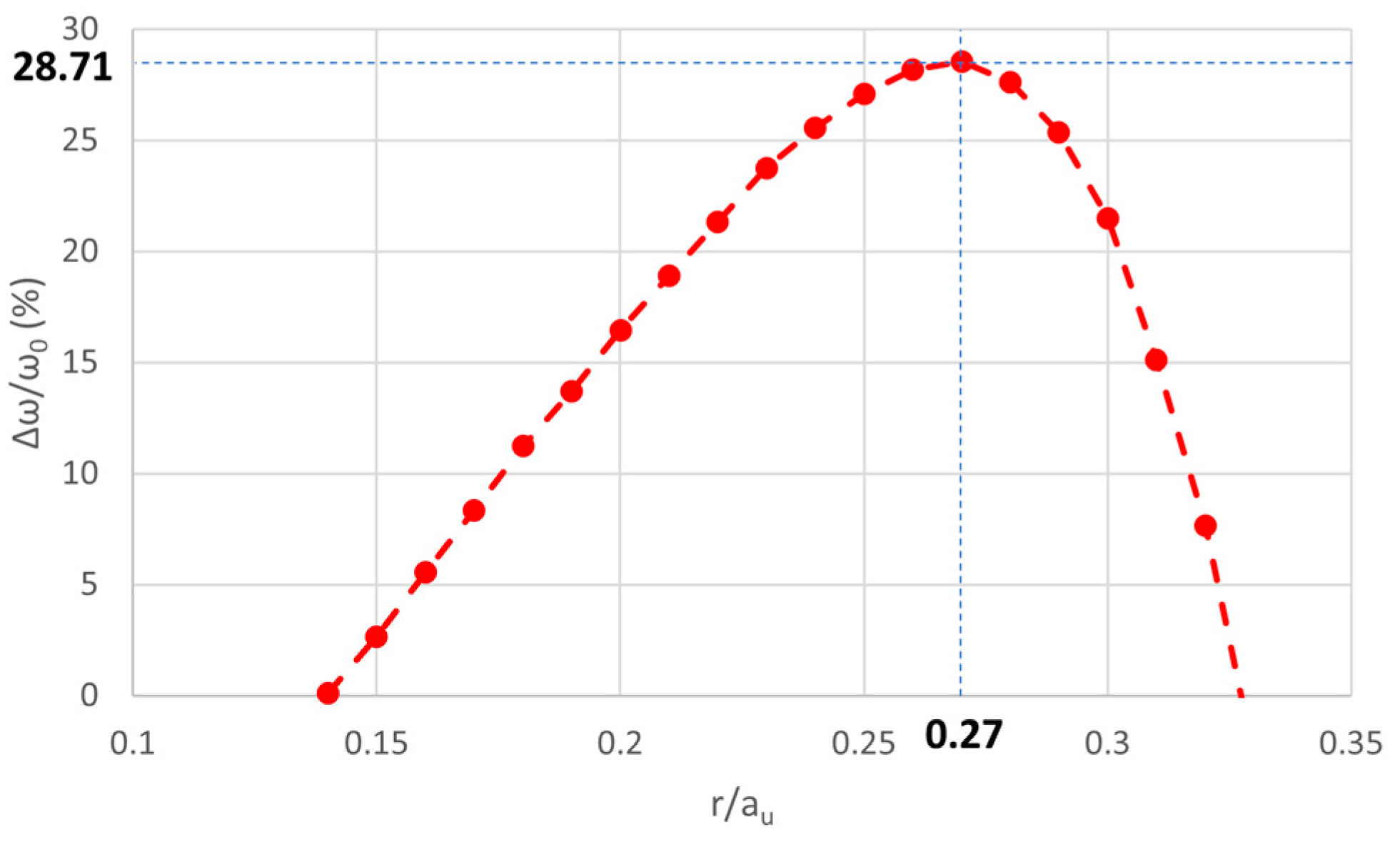
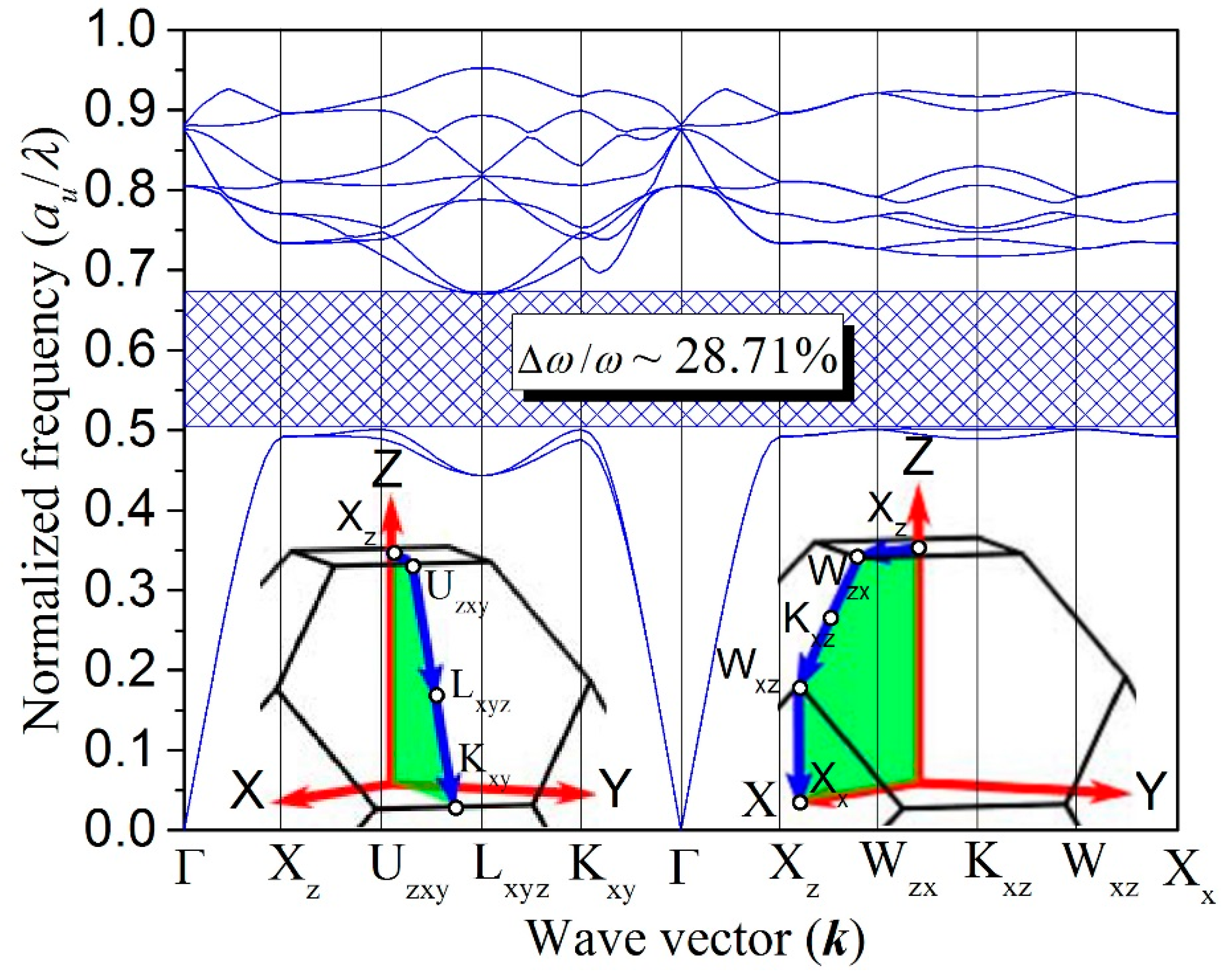
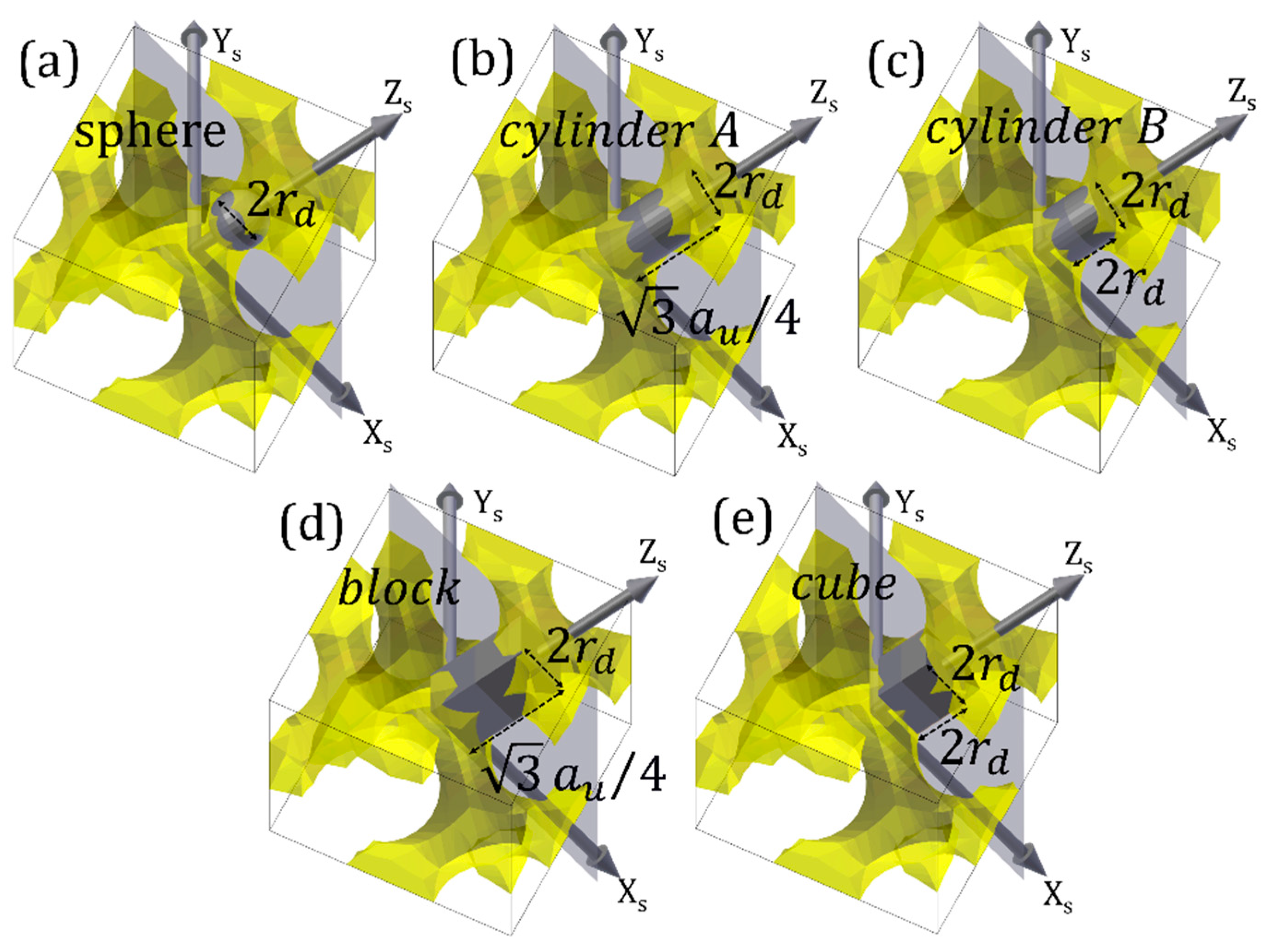

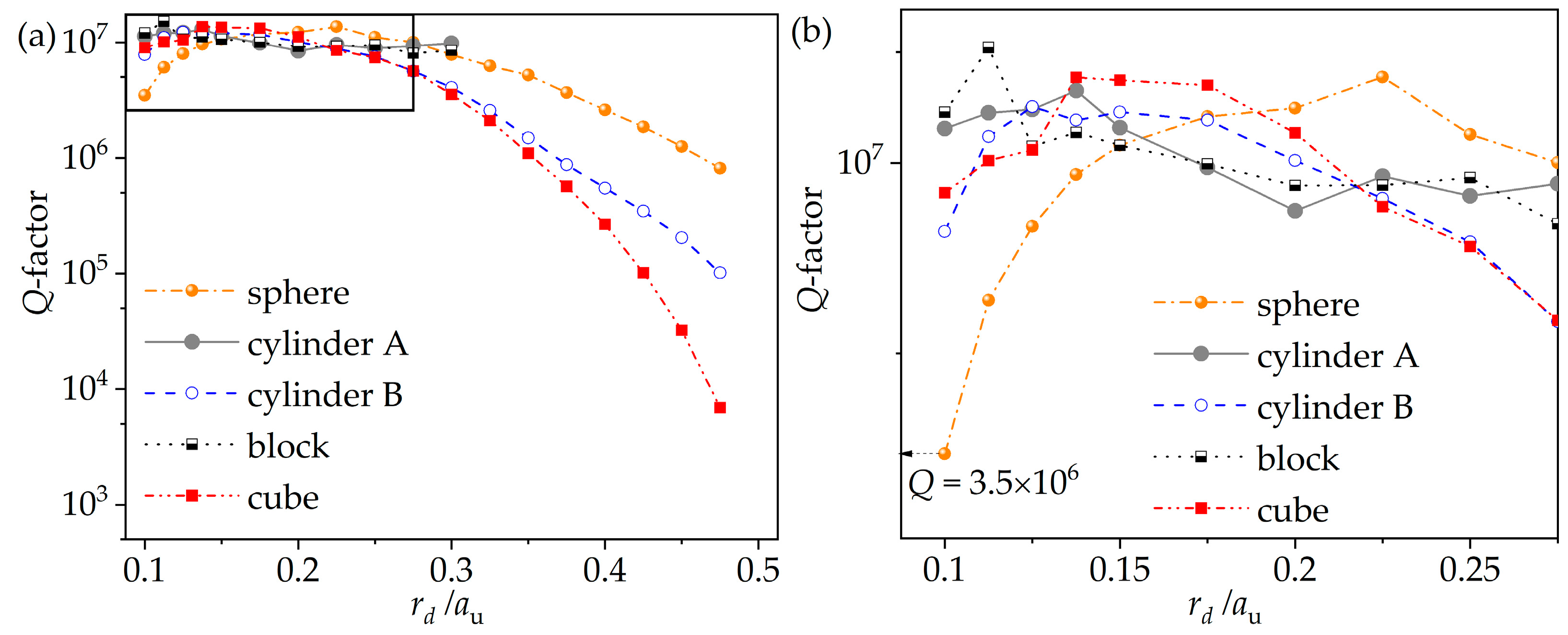
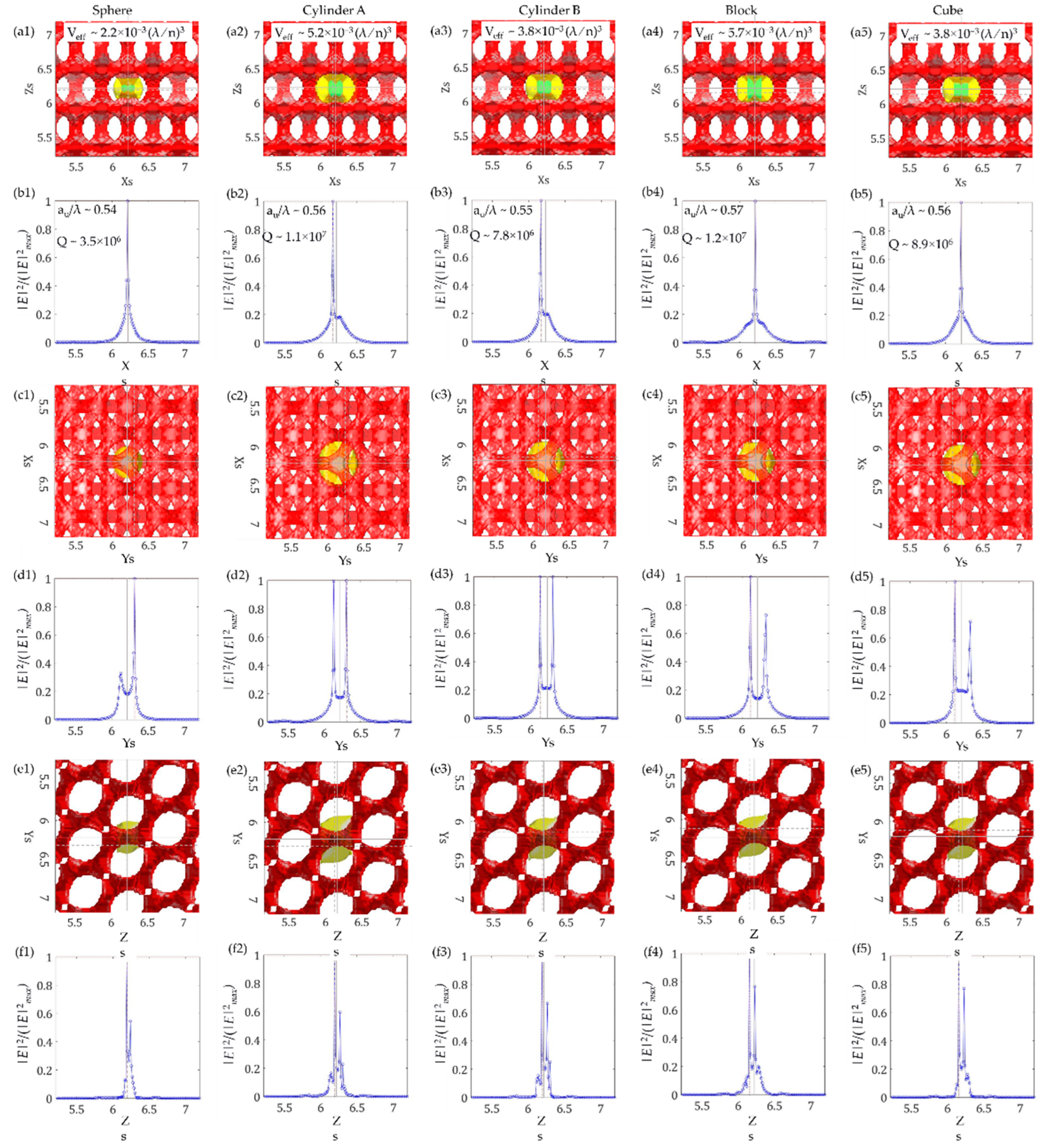
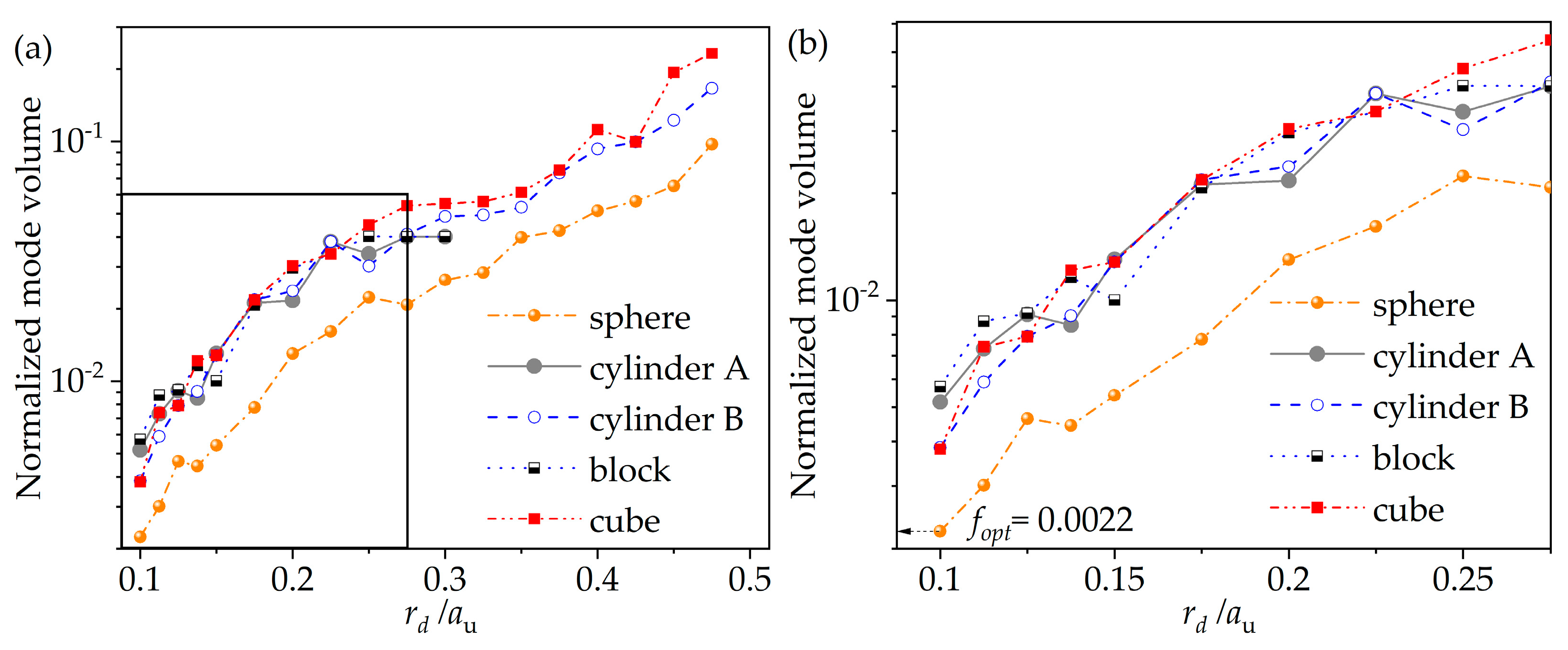
Publisher’s Note: MDPI stays neutral with regard to jurisdictional claims in published maps and institutional affiliations. |
© 2022 by the authors. Licensee MDPI, Basel, Switzerland. This article is an open access article distributed under the terms and conditions of the Creative Commons Attribution (CC BY) license (https://creativecommons.org/licenses/by/4.0/).
Share and Cite
Taverne, M.P.C.; Ho, Y.-L.D.; Rarity, J.G. Strongly Confining Light with Air-Mode Cavities in Inverse Rod-Connected Diamond Photonic Crystals. Crystals 2022, 12, 303. https://doi.org/10.3390/cryst12030303
Taverne MPC, Ho Y-LD, Rarity JG. Strongly Confining Light with Air-Mode Cavities in Inverse Rod-Connected Diamond Photonic Crystals. Crystals. 2022; 12(3):303. https://doi.org/10.3390/cryst12030303
Chicago/Turabian StyleTaverne, Mike P. C., Ying-Lung D. Ho, and John G. Rarity. 2022. "Strongly Confining Light with Air-Mode Cavities in Inverse Rod-Connected Diamond Photonic Crystals" Crystals 12, no. 3: 303. https://doi.org/10.3390/cryst12030303
APA StyleTaverne, M. P. C., Ho, Y.-L. D., & Rarity, J. G. (2022). Strongly Confining Light with Air-Mode Cavities in Inverse Rod-Connected Diamond Photonic Crystals. Crystals, 12(3), 303. https://doi.org/10.3390/cryst12030303







